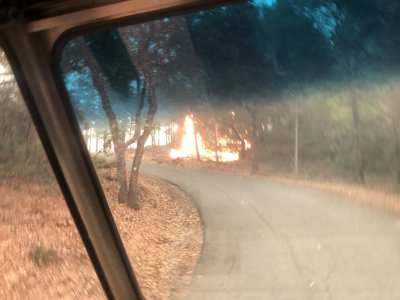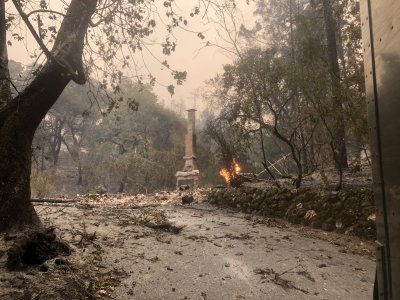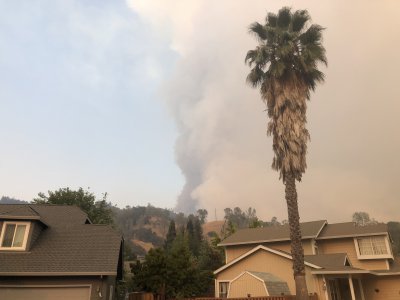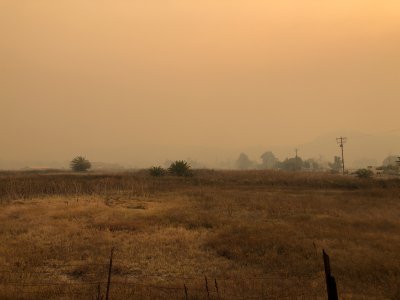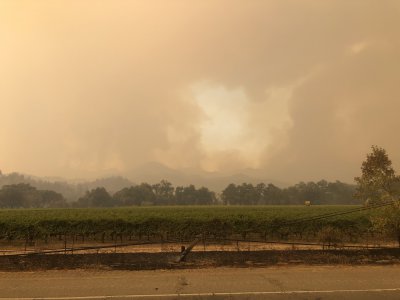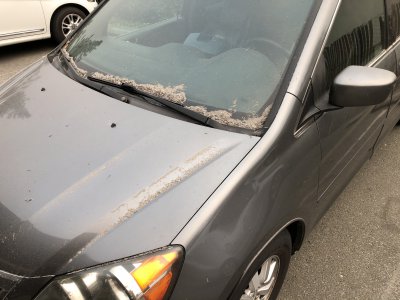With the pot revenue drying up, towns like Willits must be struggling.
I’m not a big fan of illegal pot farmers bypassing the IRS with cash crops.
Sorry, too political? I don’t smoke dope.
Yes, it’s sad to see these beautiful forests burning.
How can the states fund selective cuts, brush mitigation to reduce wildfires?.
My opinion, let the private sector into federal, private and state lands to take timber as needed with a plan to grow a healthy, renewable forest.
Just saying....
Unfortunately I think we are beyond that point. I see this as nature saying we had our chance and now it will manage the land for us. The forests will grow back, but it will take decades which isn't much consolation for those of us here now who enjoy them.
Many people like to point to Native American use of fire on the land. That encouraged fire dependent vegetation, but it isn't a natural process.
Many European settlers also used fire on the land, hunters, farmers, ranchers and sheepherders frequently used fire to leave open spaces that were useful to them, and in many parts of California this occurred into the 1930s and 40s. The Mendocino National Forest which has been hammered by fires in recent years (now has the dubious honor of hosting the 1st and 2nd largest fires in state history) was one of the only forests in California during the 1950s and 60s that would allow Harold Biswell to conduct his experiments conducting prescribed burns . Harold Biswell was something of an outcast derisively known by his fellow professors of forestry at UC Berkeley, as Harry the Torch.
At that time timber was king and fire scared trees didn't bring as much money. Like fire logging on a large scale changes the eco system. As California forests go the Mendocino has been fairly progressive in using fire to reduce fuel loading. In the big picture those areas treated may prove to have sustained less severe burning, but the forest as a whole has been devastated. Most of its 913,000 acres will have burned between the fires in 2018 and 2020.
At the turn of the last century there were massive fires in the Northern states as a result of unregulated logging, fires that until recently made our current fires seem pretty tame.
In 1871 the Pestigo fire in Wisconsin burned 1.2 million acres, at the same time the Great Michigan and Port Huron fires burned 2.5 million acres in Michigan (the drought and hot dry winds also added to the Great Chicago fire which occurred at the same time). 1000-2500 died in Wisconsin, and another 250-500 in Michigan (the actual number is unknown since most records of who lived in the area were destroyed by the fires).
The 1881 the Thumb fire burned 1 million acres in one day on the "thumb" of Michigan's lower peninsula.
In 1894 the Great Hinkley Fire in Minnesota burned 250,000 acres and killed 400-500 people.
In 1902 the Yacolt fire burned 500,000 acres in Washington and Oregon.
Then in 1910 the Great Fire of 1910 topped them all burning 3 million acres in Washington, Idaho, Montana and British Columbia and killing 78 people (mostly men recruited to fight the fires). 1910 was ended with the Baudette fire that burned 300,000 acres in Minnesota.
These are just the more notable fires that we still remember over 100 years later. The "War on fire" was declared by men who had these fires as recent history which often gets overlooked by modern historians looking for an easy solution and somebody to point a finger at.
Climate plays a part whether it is "changing" or just abnormal. Drought, high temperatures and winds make fires more intense. Drier warmer winters have sparked an increase in the bark beetle activity that are turning forests in Southern California into standing kindling. Bad management plays a part.
Human infrastructure adds to fire starts, and makes the fires more expensive and harder to control (firefighters sitting by houses to protect them are not available to engage the actual fire). People living near the forests also make it harder to use managed fire, due to complaints of the smoke, and the added hazard of "bonus acres". If a managed fire gets a little froggy in the middle of the forest it isn't as serious as when it gets loose in nearby communities.
There are no easy answers, and unfortunately people have attention spans that are too short to usefully implement some of the better ideas. You can't create a workforce overnight, so throwing money at the problem this year and cutting budgets next year are not a solution. One of my old bosses used to say, the last time I checked, it takes about 20 years to gain 20 years of experience.
Off of my soap box.





